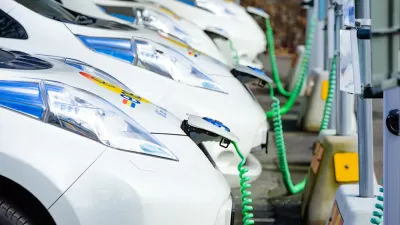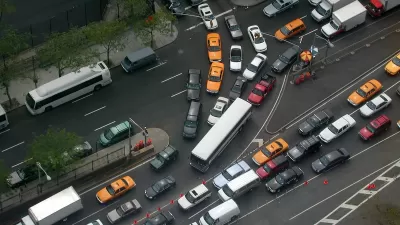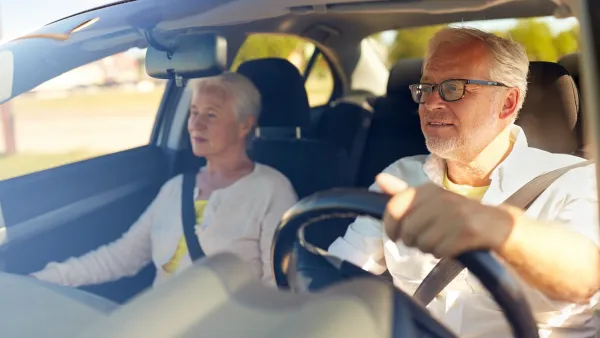The Scandinavian country is a pioneer when it comes to EV adoption, but there are downsides.

In a piece for Vox, David Zipper describes how the push to promote electric vehicles in Norway is contributing to the famously egalitarian country’s inequality and stymying efforts to reduce car dependency. “Despite the hosannas from abroad, Norway’s government has begun to unwind some of its electrification subsidies in order to mitigate the downsides of no-holds-barred EV promotion.”
Environmental and transportation advocates have noted that switching fossil-fuel powered cars for electric ones is not enough. To limit the impacts of climate change, we must reduce vehicle miles driven overall. But in Norway, where the government has heavily invested in EV subsidies and roads, cars have become indispensable for many residents—but not all. “In Bergen, for instance, 67 percent of households in the lowest income quartile go without [a car].”
Meanwhile, “The effect of EV adoption on public transportation has been a particular concern for Norway’s cities because boosting transit ridership has been a linchpin of local mobility strategies.” According to Zipper, “EV promotions have shrunk the funding available to invest in transit improvements because Norwegian public transportation budgets are partly funded through the road tolls that the national government exempted EV owners from paying.”
Norway offers a valuable lesson for other countries and cities: while EVs can help decarbonize the transportation industry, “an influx of electric vehicles can hinder efforts to escape the automobile’s urban stranglehold.”
FULL STORY: Why Norway — the poster child for electric cars — is having second thoughts

Planetizen Federal Action Tracker
A weekly monitor of how Trump’s orders and actions are impacting planners and planning in America.

Chicago’s Ghost Rails
Just beneath the surface of the modern city lie the remnants of its expansive early 20th-century streetcar system.

San Antonio and Austin are Fusing Into one Massive Megaregion
The region spanning the two central Texas cities is growing fast, posing challenges for local infrastructure and water supplies.

Since Zion's Shuttles Went Electric “The Smog is Gone”
Visitors to Zion National Park can enjoy the canyon via the nation’s first fully electric park shuttle system.

Trump Distributing DOT Safety Funds at 1/10 Rate of Biden
Funds for Safe Streets and other transportation safety and equity programs are being held up by administrative reviews and conflicts with the Trump administration’s priorities.

German Cities Subsidize Taxis for Women Amid Wave of Violence
Free or low-cost taxi rides can help women navigate cities more safely, but critics say the programs don't address the root causes of violence against women.
Urban Design for Planners 1: Software Tools
This six-course series explores essential urban design concepts using open source software and equips planners with the tools they need to participate fully in the urban design process.
Planning for Universal Design
Learn the tools for implementing Universal Design in planning regulations.
planning NEXT
Appalachian Highlands Housing Partners
Mpact (founded as Rail~Volution)
City of Camden Redevelopment Agency
City of Astoria
City of Portland
City of Laramie





























